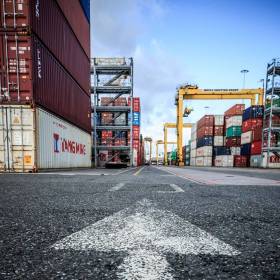Displaying items by tag: New Role Ports
TEN-T Review Must Recognise the New Roles of Ports
The European Commission before summer kicked off the review of the TEN-T Regulation 1315/2013 with a public consultation. The European Sea Ports Organisation (ESPO) submitted its proposals for the review.
“European ports remain strong supporters of the 2013 Europe’s Transport Infrastructure Policy, which literally put the seaports on the TEN-T map. It is now time to adapt the framework to the new market realities, new challenges and new needs. Looking in a more comprehensive way at what ports can do, not only for transport, but also in terms of decarbonisation of society and digitalisation of supply chains and having that mirrored in the guidelines, is one of the to-do’s in this review. Nowadays ports are much more than a component of maritime transport, they have a pivotal role between the different modes and the different networks”, says ESPO’s Secretary General Isabelle Ryckbost.
For European ports, the review must be used, above all, as an opportunity to update the TEN-T network in relation to new market realities (such as volume growth, scale increases); new societal challenges (climate, air pollution, noise, increasing urbanisation); new needs (digitalisation, automation, e-commerce); and as a consequence, the changing role of European ports.
ESPO believes that seaports are more than a “component of maritime transport infrastructure”. The new TEN-T guidelines should be adapted to recognise the role many seaports are playing as strategic multimodal nodes, nodes of energy and digital hubs on top of their classical role as components of maritime transport infrastructure. Their unique role makes each European port a strategic partner in responding to today’s main challenges of decarbonisation and digitalisation.
Moreover, over the last years, European ports have been increasingly involved in a process of cooperation, clustering and merging, both bottom-up and top-down. The new TEN-T policy should take into account and encourage these developments in the port sector. European ports believe that port clusters have to be clearly defined in the framework of the future TEN-T policy. While the clustering should not change the initial identification of “core” and “comprehensive” ports, individual projects should be assessed in terms of their relevance for the cluster and thus the network as such.
ESPO stresses the importance of Motorways of the Sea (MoS) as an integral and important part of the TEN-T network and believes that the maritime dimension should be considered equally important as the land-based TEN-T corridors. In order to use the full potential of the network’s maritime links, short sea shipping should be strongly facilitated as an equally important transport mode for intra-European transport next to the other transport modes. In that regard, MoS requirements should be reviewed and the maritime links between two countries should be fully acknowledged and prioritised as cross-border.
Finally, ESPO points out that the deadlines for realising the core and comprehensive TEN-T network can only be met with the full support of Member States, and if the engagement of the Union and its Member States comes with a corresponding budget. ESPO’s study on the investment needs of European ports has revealed that the ports’ investment needs amount to 48 billion EUR over the next ten years. In the period 2014-2017, port managing bodies have only been able to obtain 4% of the CEF transport budget.
The Public Consultation on the review will be followed by an evaluation study and other targeted consultations. The Commission proposal for a revision is planned for the first semester of 2021.
To read the full position (download pdf) here.





























































